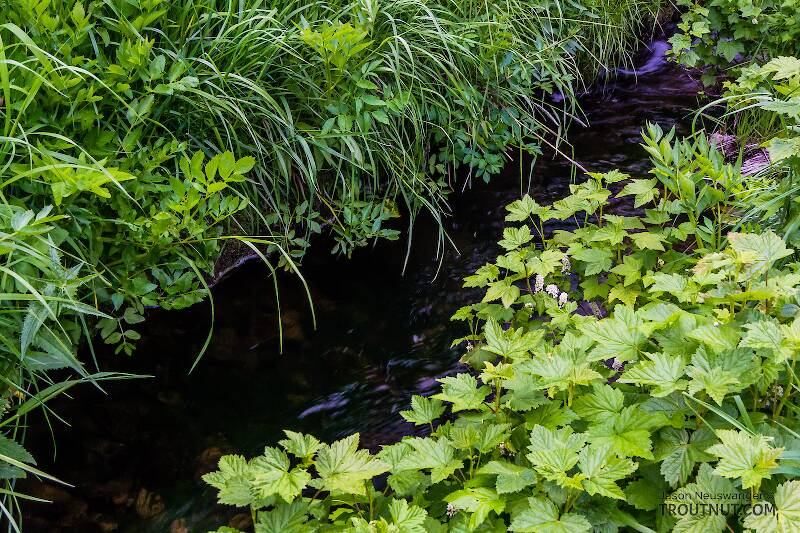
Hex Mayflies
Hexagenia limbata
The famous nocturnal Hex hatch of the Midwest (and a few other lucky locations) stirs to the surface mythically large brown trout that only touch streamers for the rest of the year.

Mayfly Species Neocloeon alamance
Where & when
In 2 records from GBIF, adults of this species have been collected during June (50%) and July (50%).
Species Range
Physical description
Most physical descriptions on Troutnut are direct or slightly edited quotes from the original scientific sources describing or updating the species, although there may be errors in copying them to this website. Such descriptions aren't always definitive, because species often turn out to be more variable than the original describers observed. In some cases, only a single specimen was described! However, they are useful starting points.
Male Spinner
Wing length: 5-6 mm
Abdominal tergites 2-6 of male imago semi-hyaline, pale yellowish white marked with brown.
Head reddish brown. Turbinate eyes large, bright orange, somewhat egg-shaped. Pronotum olive brown; mesonotum bright red-brown, metanotum darker red-brown. A yellow line anterior to the wing root, and a yellowish brown area on mesonotum on each side of median sclerite. Pleura yellowish to olive brown; sternum red-brown shading into olive brown posteriorly. Legs whitish. Wings hyaline, venation pale. A very faint whitish cloud in the stigmatic area of the fore wing. 6-8 cross veins, aslant, usually complete; few or no granulations between them.
Abdominal tergites 2-6 semi-hyaline, faintly yellowish, marked and faintly washed with brownish. Posterior margin pale brown; an extension of this band forms triangular brown patches in the postero-lateral angles. A longitudinal submedian stripe, pale brown in color, margins the mid-dorsal line the length of each tergite, widening posteriorly. Between these stripes and nearer the mid-dorsal line are two short darker bars parallel to one another, from the anterior margin of about the first third of each tergite. Sternites 2-6 hyaline, pale yellowish white. Spiracular area marked with a broken brown line. Segments 7-10 semi-opaque; tergites olive to reddish brown, becoming darker posteriorly; sternites somewhat paler in color, 9 margined anteriorly and laterally with dark red-brown. Forceps and tails whitish. Genitalia reminiscent of C. conturbatum (now a synonym of Anafroptilum conturbatum); second forceps joint wider than long, its inner margin prolonged inward in a somewhat ax-blade-shaped extension; third forceps joint with a slight swelling near the base on the inner margin, a more pronounced swelling apically, somewhat bowed in the middle; distal joint 2 1/2 to 3 times as long as wide. Between the bases of the forceps is a conical penis-cover (see fig. 167).
Start a Discussion of Neocloeon alamance
References
- Needham, James G., Jay R. Traver, and Yin-Chi Hsu. 1935. The Biology of Mayflies. Comstock Publishing Company, Inc.
Mayfly Species Neocloeon alamance
Species Range
Resources
- NatureServe
- Integrated Taxonomic Information System
- Global Biodiversity Information Facility
- Described by Traver (1932)


